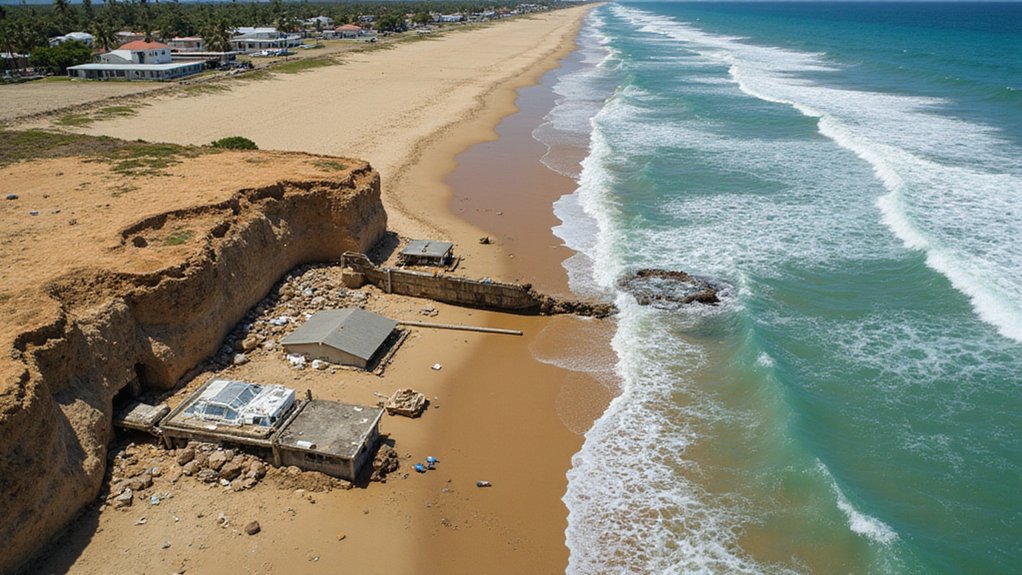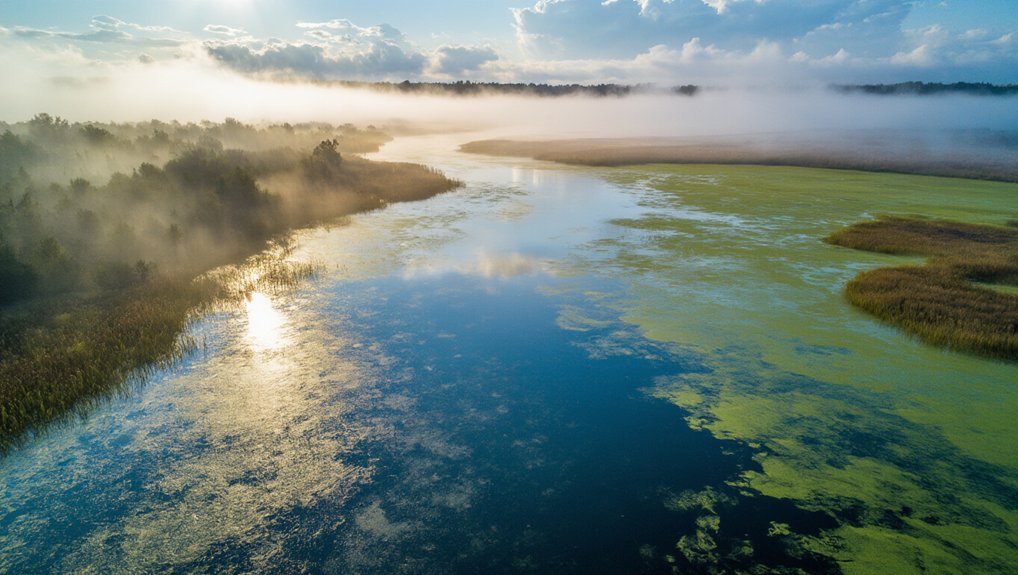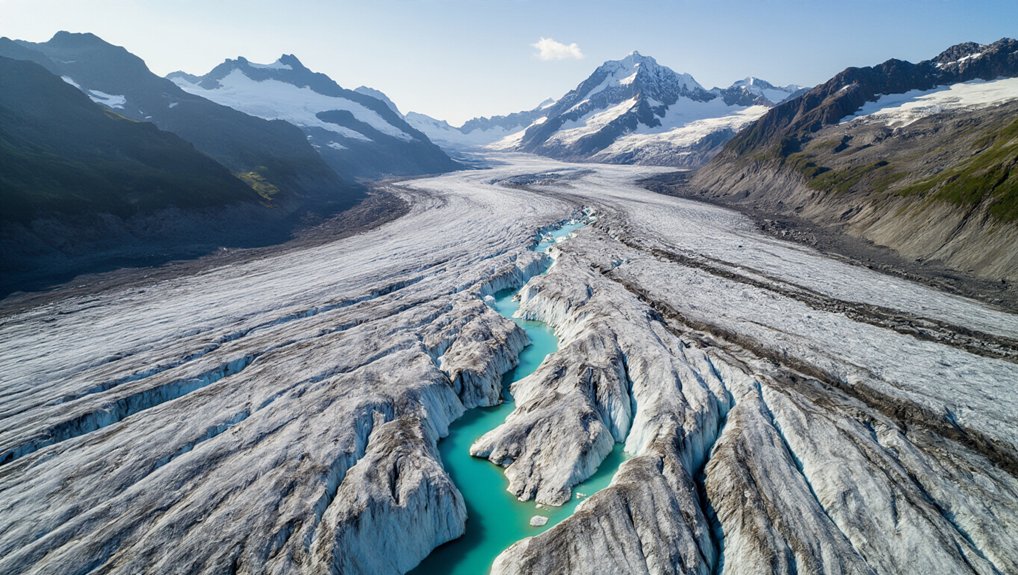Grains of sand, slipping through humanity’s fingers like time itself. That’s not just a poetic image anymore—it’s reality for coastal communities worldwide. Nearly half of our sandy beaches could vanish by 2100, and we’re already seeing the effects. The 20th century brought sea levels up 11-16 centimeters. Sounds small? Tell that to Alexandria, where buildings are collapsing at rates of 40 per year.
Southern California locals might want to reconsider those beachfront investments. Erosion rates there will triple by 2050. Currently averaging 1.45 meters yearly, they’ll hit a whopping 3.18 meters annually by century’s end. Hope you didn’t plan on passing that beach house to your grandkids.
Beachfront dreams washing away—your million-dollar view becomes open water by the time your mortgage ends.
Money talks, and it’s screaming about coastal erosion. The cost of living along Southern California’s coast will quintuple by mid-century. Beach maintenance budgets are already straining. Global sand prices? Up. Tourism dollars? Going down as beaches shrink. It’s basic math, really. Less beach equals fewer tourists equals economic disaster for coastal towns.
Lagos, Nigeria has it particularly bad. Landmark Beach there is projected to lose 918.3 meters by 2100. That’s nearly a kilometer of shoreline—gone. Just wiped from the map.
The science gets grimmer. About 75% of world coastlines are losing suspended sediment at 1.63% annually since 1984. No sediment means no natural beach replenishment. Deltas, marshes, wetlands—all vanishing.
Our concrete jungles aren’t helping. Urban development blocks the natural inland migration of beaches, fundamentally squeezing them out of existence between rising seas and immovable cities. The average global temperature has increased by 0.15 to 0.20°C per decade since the 1970s, accelerating the process. Smart planning, right?
Historic sites aren’t spared either. Centuries-old structures face unprecedented threats. Even small sea level increases devastate coastal heritage sites. Once they’re gone, they’re gone forever. No rebuilding ancient ports.
The beach vacation your parents enjoyed? Might be a luxury your kids won’t recognize. Tourist hotspots are high-risk zones according to European Commission data. The evidence is crystal clear—our shorelines are vanishing right before our eyes. Cities like Hammamet in Tunisia are experiencing shoreline retreat rates ranging from 0.21 to 4.49 meters annually, mirroring Southern California’s crisis. Ocean acidification is simultaneously destroying coral reefs that naturally protect many coastlines from erosion, creating a dangerous feedback loop.
References
- https://www.visualcapitalist.com/cp/the-tourist-beaches-predicted-to-shrink-the-most/
- https://www.preventionweb.net/news/beach-erosion-will-make-southern-california-coastal-living-five-times-more-expensive-2050-usc
- https://www.sciencedaily.com/releases/2025/02/250220192143.htm
- https://eos.org/articles/coastlines-around-the-world-are-losing-sediment
- https://www.weforum.org/stories/2025/03/rising-sea-levels-global-threat/









